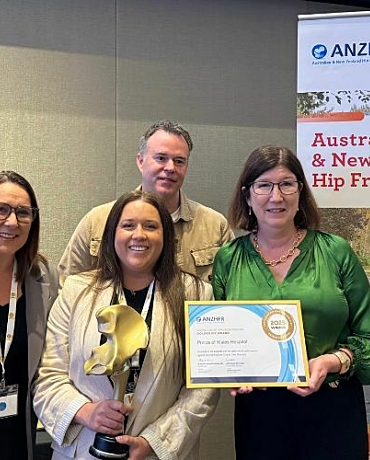A new report launched today by the Australian and New Zealand Falls Prevention Society (ANZFPS) proposes a plan for urgent and coordinated action that could reduce falls by 30% and turn the tide on a $2.3 billion healthcare burden.
Key points:
- Falls and fall injuries among older people are a large and growing problem in Australia. Every day 14 Australians aged 65+ will die from a fall and 364 will have a fall that puts them in hospital.
- Treatment of injuries from falls in older people cost over $2.3 billion in 2020, with multiple flow-on effects for ambulance services, loss of independence by older people, and family impact.
- A new report suggests coordinated government action, including a well-implemented national fall prevention strategy, could reduce falls by 30% within 12 months.
Australia’s leading falls, balance and injury experts came together in Sydney today to urge our Federal, State and Local Governments to commit to coordinated action on falls prevention, which researchers say could save thousands of lives.
Treatment of injuries from falls in older people costs our economy over $2.3 billion per year, causing devastating consequences for individuals and their loved ones.
A new report launched today by the ANZFPS, and backed by researchers, academics, clinicians and consumer groups, calls for urgent and coordinated action to save lives and reverse these trends.
“Since the National Injury Prevention and Safety Strategy 2004 – 2014 lapsed eight years ago there’s been a policy gap on the life-threatening issue of falls affecting thousands of older people across the country,” said Professor Kim Delbaere, report co-author, President of the Australian & New Zealand Falls Prevention Society and Senior Principal Research Scientist at Neuroscience Research Australia (NeuRA).
“Falls can cause people to lose their independence, and in many cases their lives. Fall injuries often result in significant concerns about falling again and social isolation, with ongoing impacts on overall quality of life. They are also the leading cause of hospitalised injuries and injury deaths in people aged 65 years above, and should be looked at as an urgent public health concern.
“Strong evidence suggests that coordinated government action on falls prevention will have quick returns, with the potential for falls to be reduced by 30% in just one year and long-term benefits for health, quality of life and independence of older Australians.
“Australia is a world leader in falls prevention research, which means we are uniquely placed to translate these insights into the development and implementation of a world-leading falls prevention plan.”
Professor Cathie Sherrington, report co-author and Lead Chief Investigator of the NHMRC Centre of Research Excellence – Prevention of Falls Injuries based at The University of Sydney, echoed these statements: “Research has shown that there is one fall-related visit to an emergency department by an older Australian every two and a half minutes.”
“The ageing of the Australian population means that the problem of fall-related injuries and deaths will worsen if we continue to fail to take preventive action.
“International guidelines recommend a tailored approach with support for exercise to maximise physical function throughout life and health care to address other risk factors. We have found that investment in fall prevention programs can be cost-effective.”
The ANZFPS’s report ‘Why investing in falls prevention across Australia can’t wait’ puts forward five recommendations to government. The recommendations form the basis of a coordinated plan that if properly implemented, could turn the tide on the significant social and economic cost of falls.
The recommendations are:
- Establish a National Falls Prevention Coordination Group, modelled on the coordinated and nationally funded action in the United States and United Kingdom, adapted for the Australian context and informed by previous initiatives in Australia and New Zealand.
- Develop and implement a 5‑year national plan for preventing falls that is funded to reach a critical mass of community-dwelling older people and those in residential care.
- Engage all levels of government and a broad range of sectors, including health and aged care, housing, transport, and planning and development.
- Include falls prevention strategies for people across the lifespan and in all settings to maximise benefits.
- Greater investment in translational falls prevention research.
The authors of the report say with a rapidly ageing population and rising instances of falls, the time to act is now. They say that only with urgent and coordinated action across all sectors, will a future without fall-related deaths and injuries be an achievable goal.
A copy of the full report can be accessed here: ANZFPS_Why investing in falls prevention across Australia can’t wait




